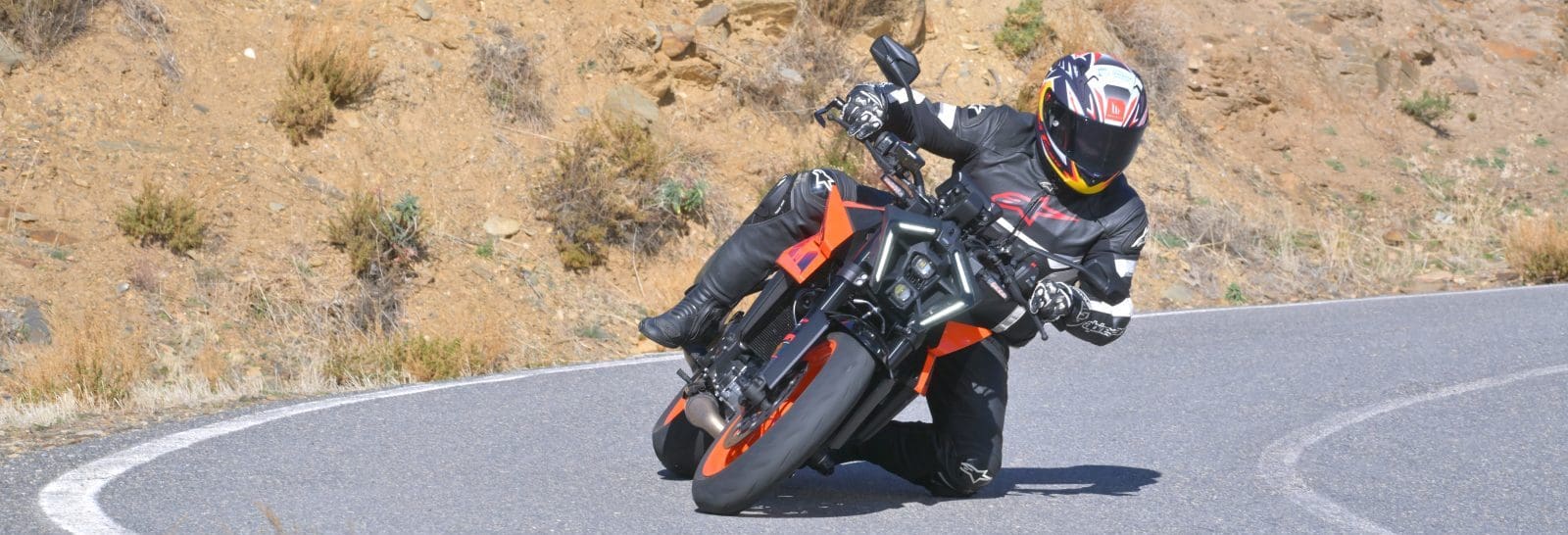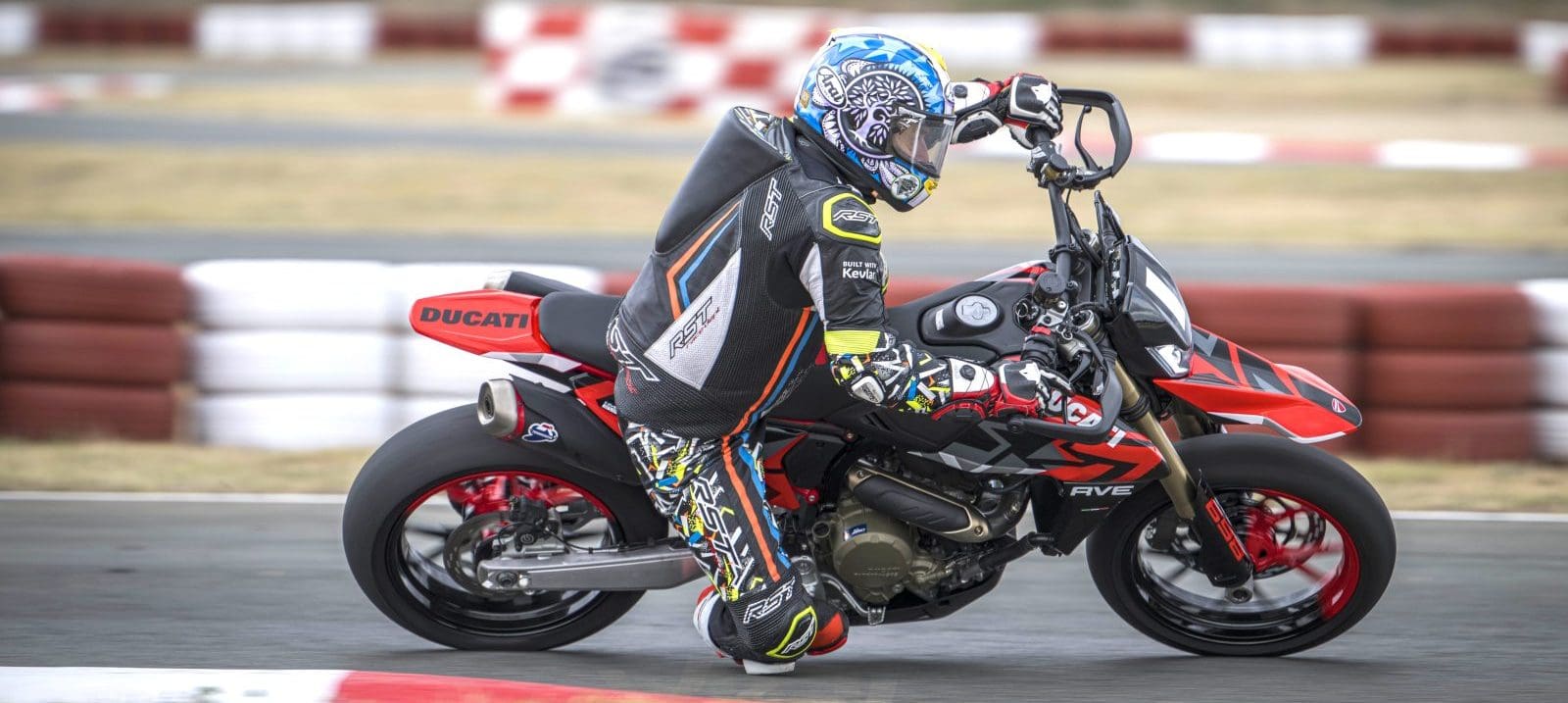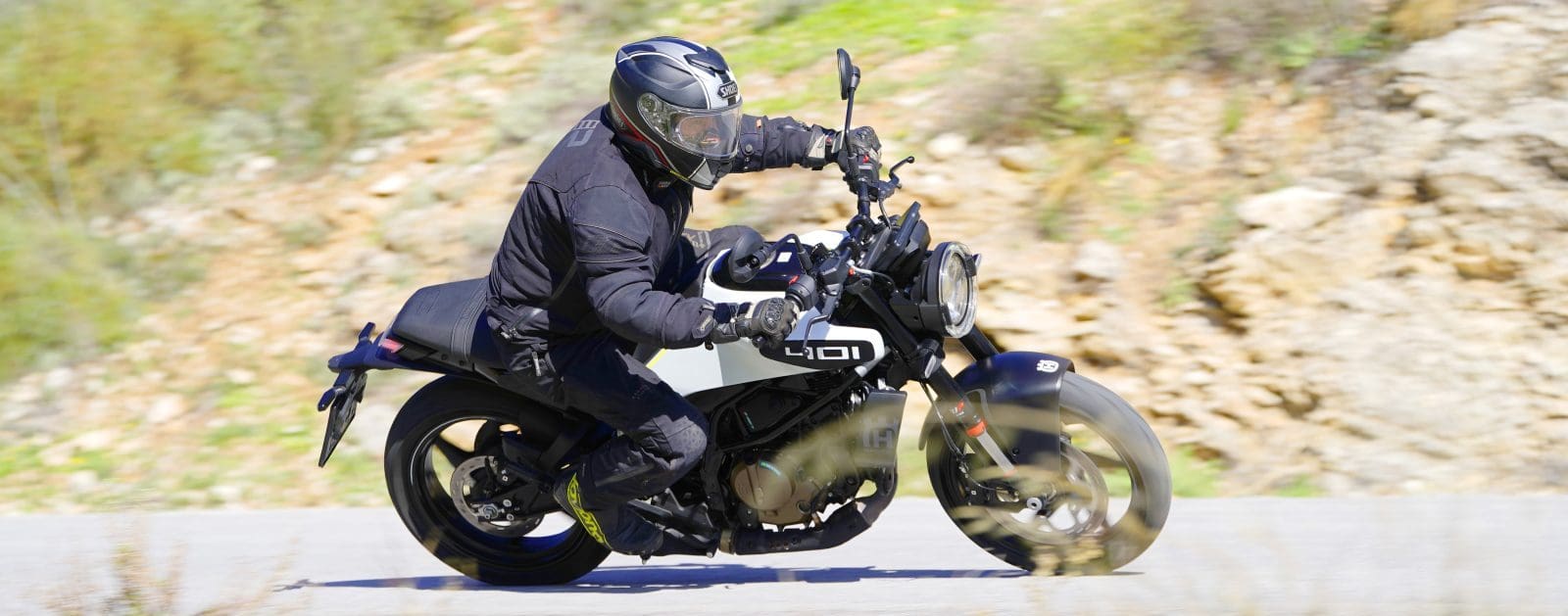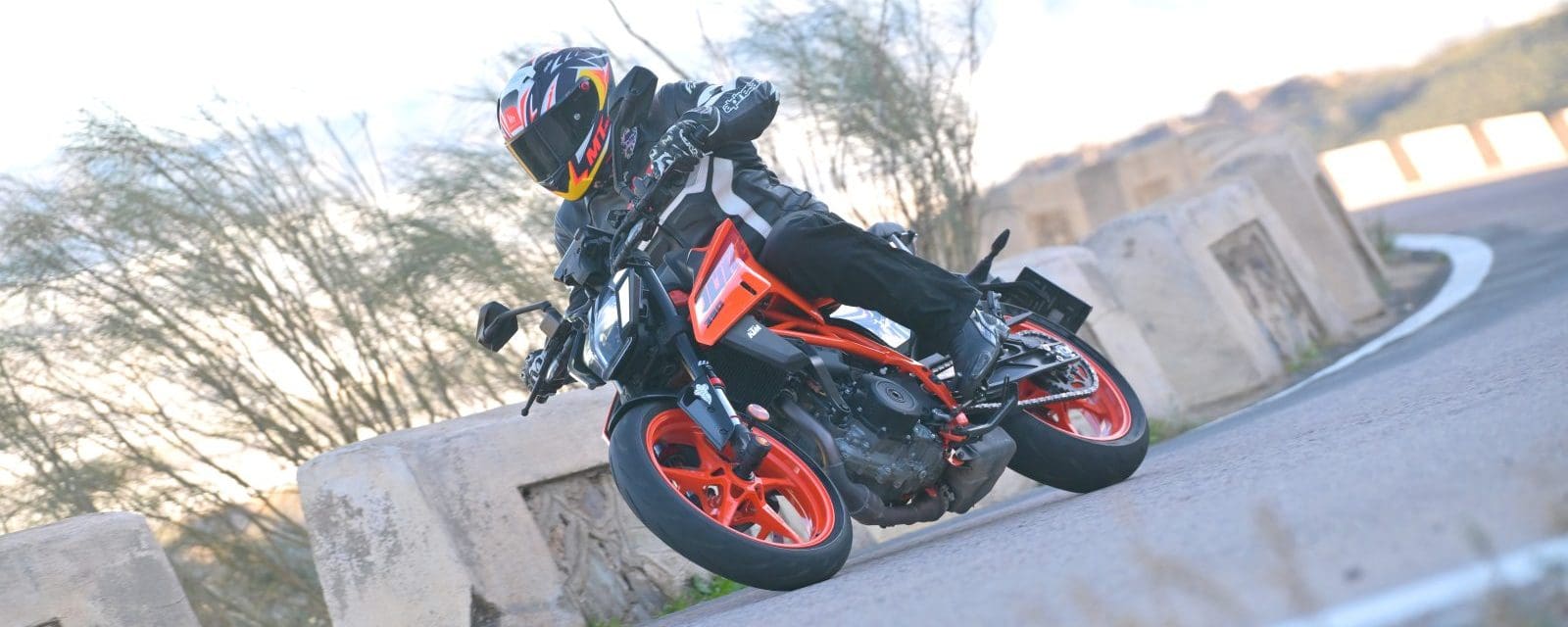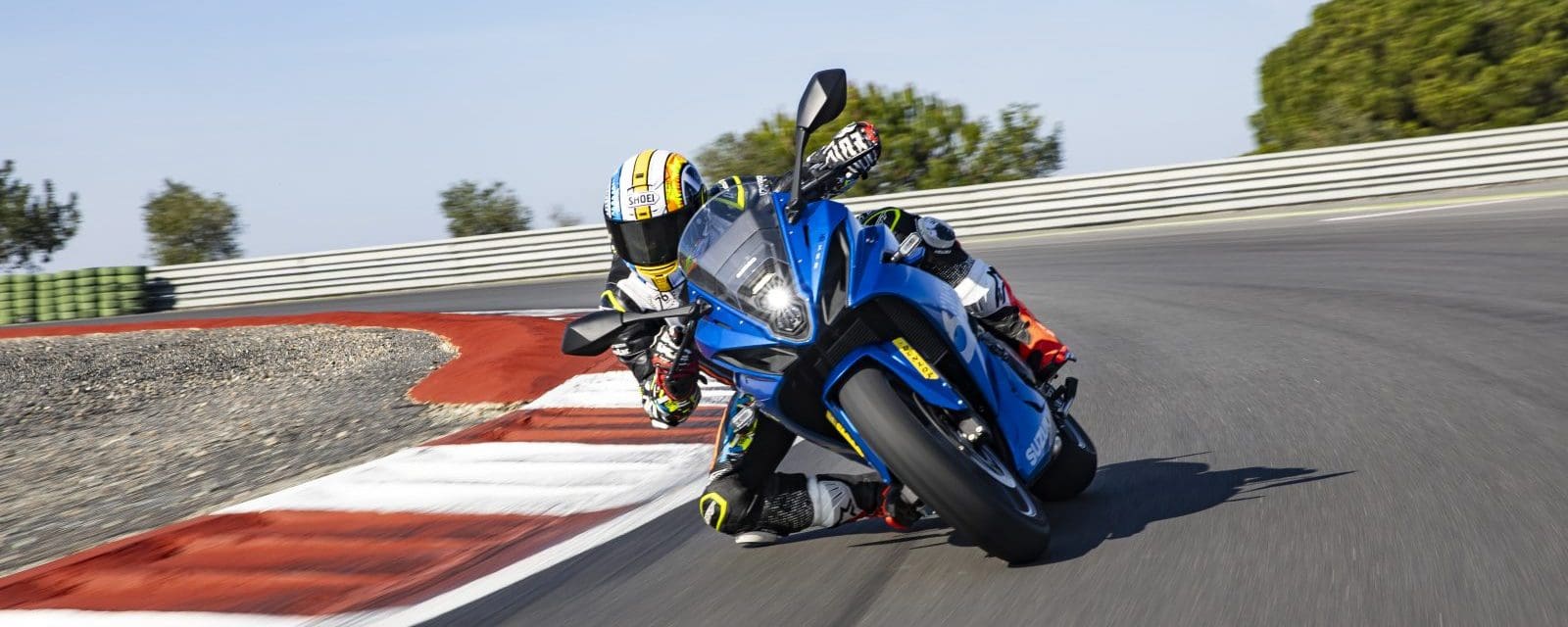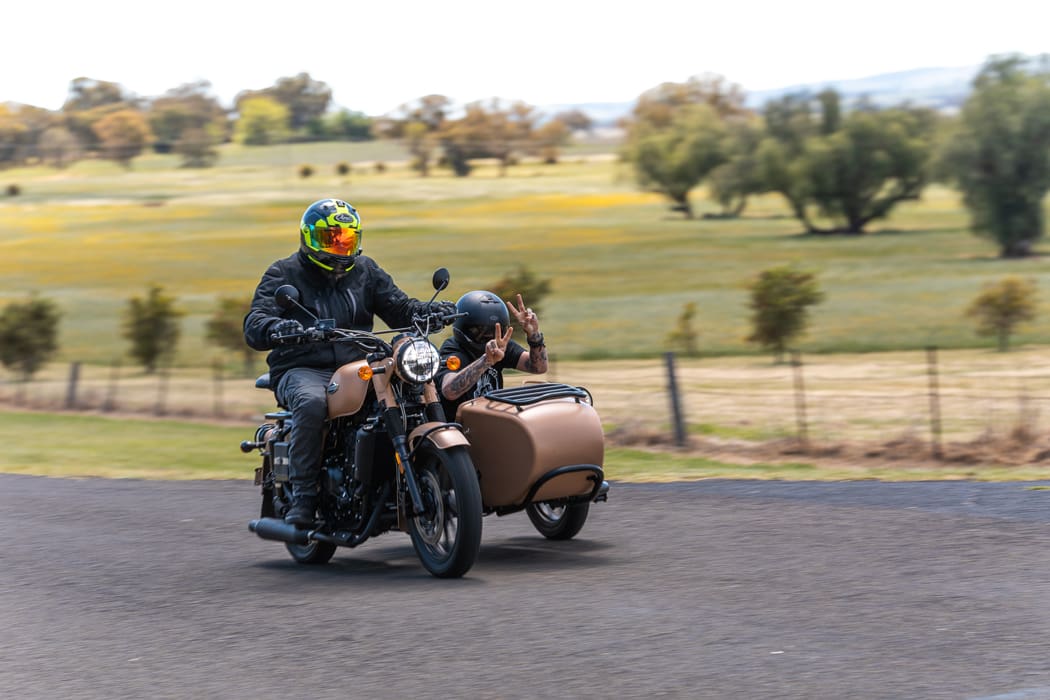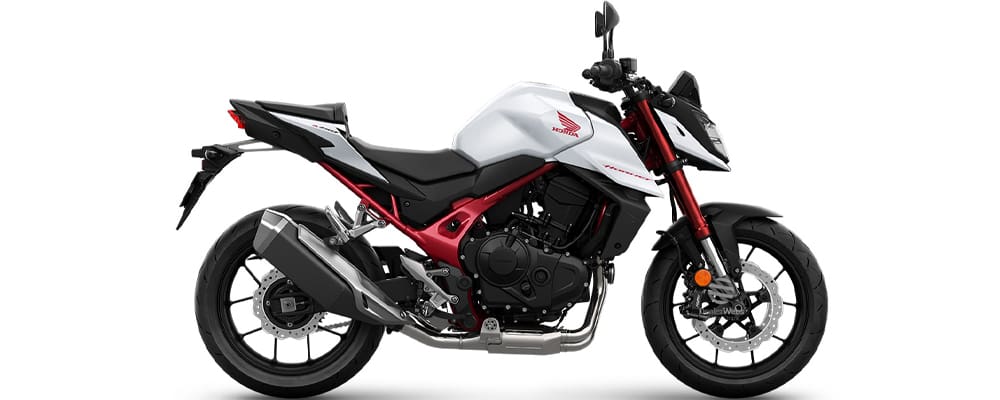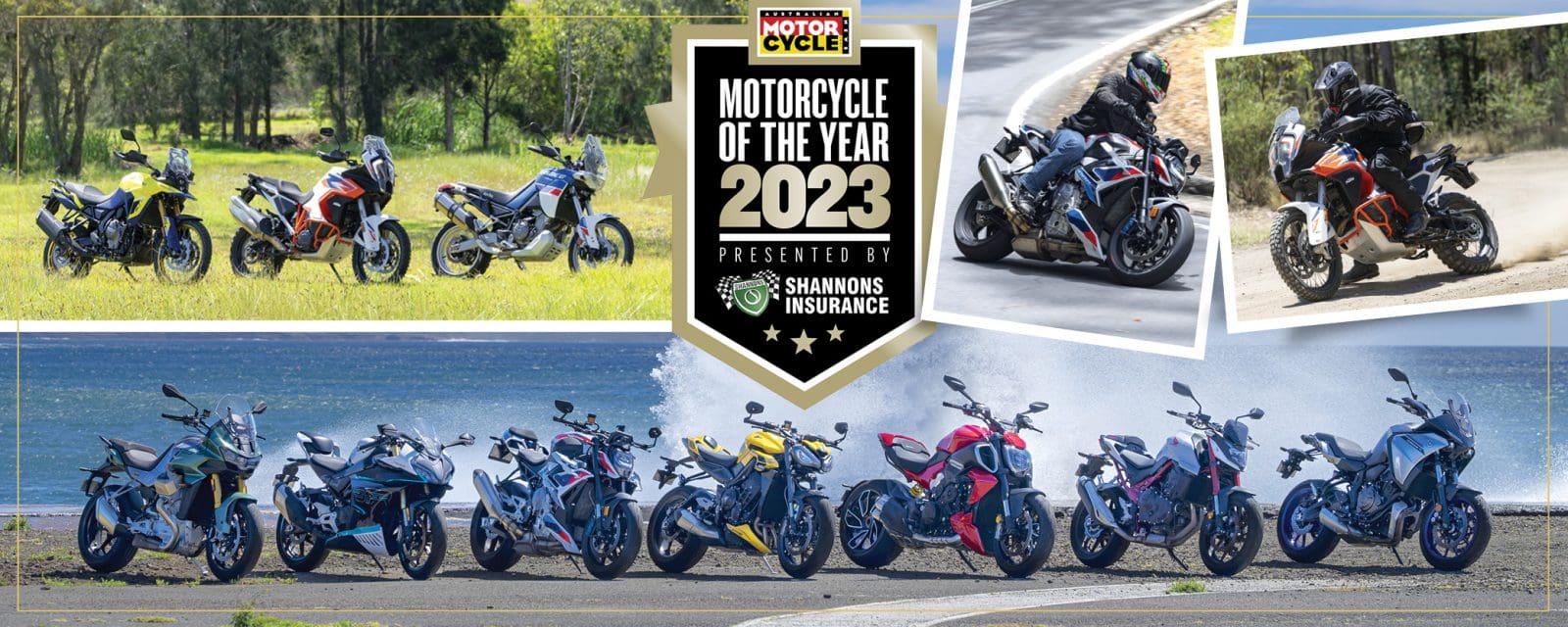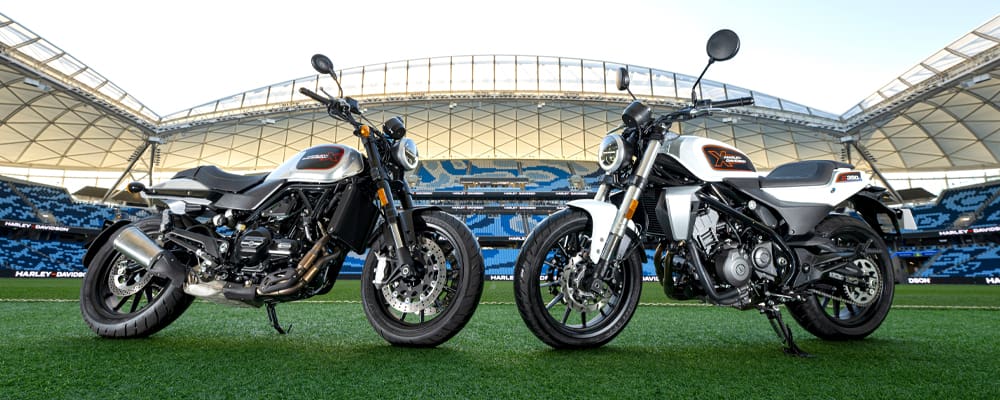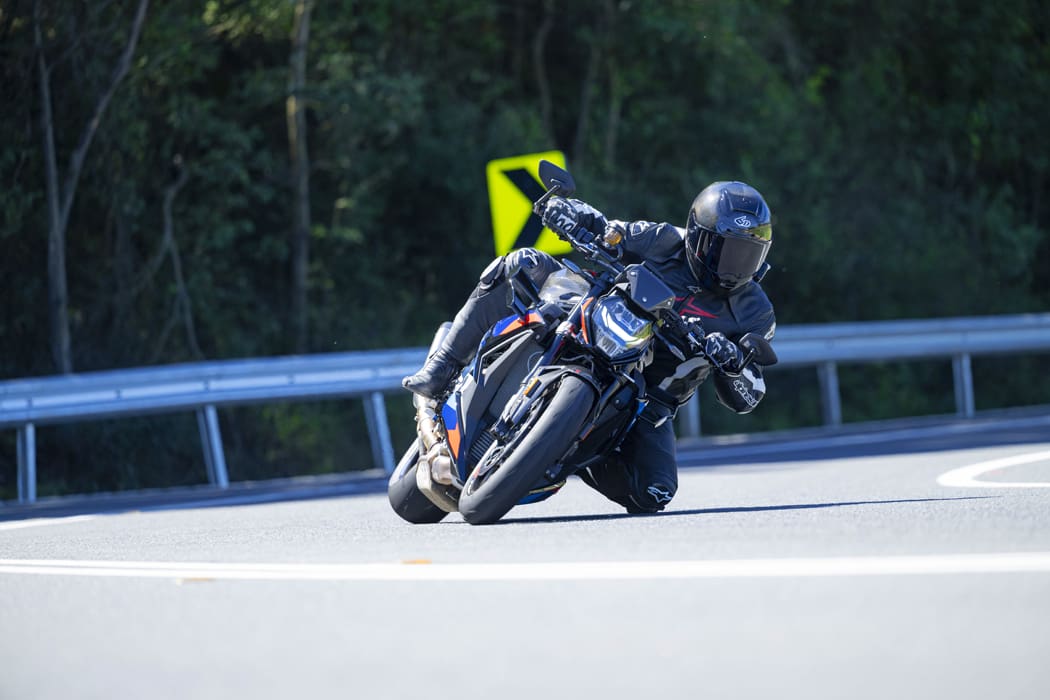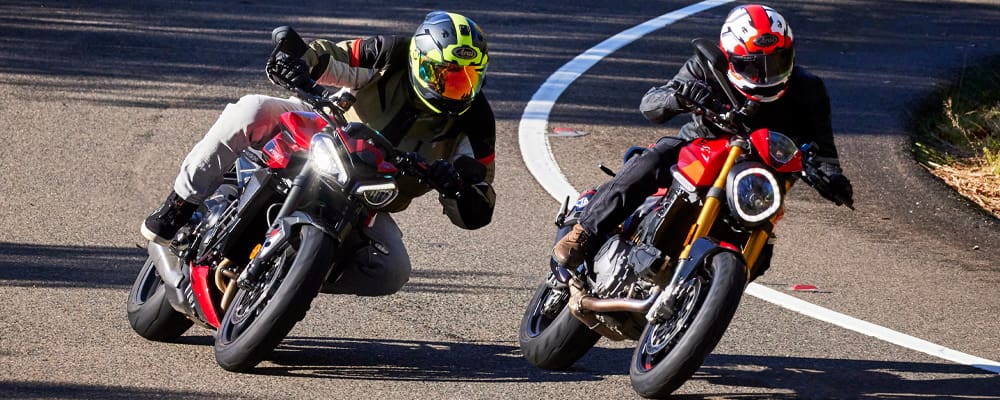Prior to its Australian launch in a couple of weeks time, AMCN’s Adam Child tested the new Suzuki GSX-8S in Europe, and here is what he thought of it.
Suzuki has a long history of producing affordable and fun naked middleweight bikes. In fact, GSX-8S aside for a minute, for many riders over 40, Suzuki’s 1996 Bandit 600 will be remembered as the original and possibly the best entry-level middleweight of them all. It was handsome, easy to ride, enormous fun and cheap – and a huge sales success across the world.
In 1999 Suzuki, seemingly with a golden touch for nailing this budget market, introduced the SV650 V-twin. Like the Bandit, it was offered naked or faired and was as undemanding as it was satisfying to own and ride. In time, the SV morphed into the Gladius then, by popular demand, back to the SV – and it is still on sale today.

Now Suzuki is introducing the all-new GSX-8S as, you’ve guessed it, an affordable, fun and easy to ride middleweight. However, despite the ethos being the same as its legendary predecessors, this is a completely new model for Suzuki which, having remained dormant for far too long, has erupted into life with the intention of grabbing a significant slice of the key middleweight market.
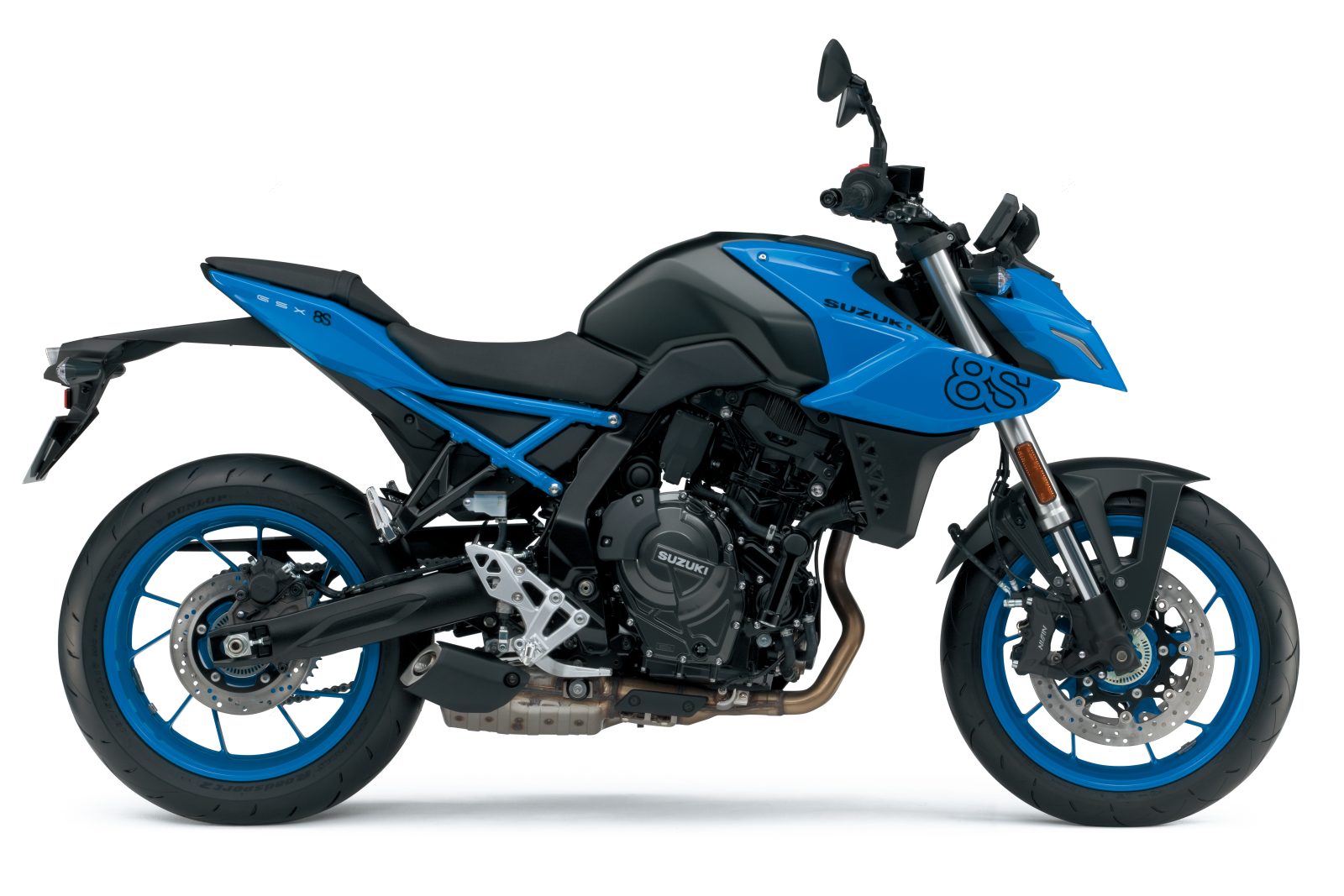
The GSX-8S is powered by Suzuki’s all-new DOHC 776cc parallel-twin platform, which features a 270-degree crank and produces a claimed 61kW (82hp) at 8500rpm and 78Nm at 6800rpm. It’s the same engine that is housed in the new V-Strom 800DE; the only differences are the fuelling and exhaust. Both use the same reverse airbox, which sits under the seat.

Ride-by-wire allows three engine modes (A, B and C) and there are three traction control settings (plus off). Rider aids are not lean-sensitive, which means no cornering ABS or traction control, but Suzuki’s two-way quickshifter does at least come as standard.

A five-inch full-colour TFT dash is, like the engine, shared with the 800 (and 1050) V-Strom and looks neat. Styling is all new, so are the swingarm and subframe, while in the metal the GSX-8S exudes a similarly compact and up-for-it vibe as a naked KTM roadster.
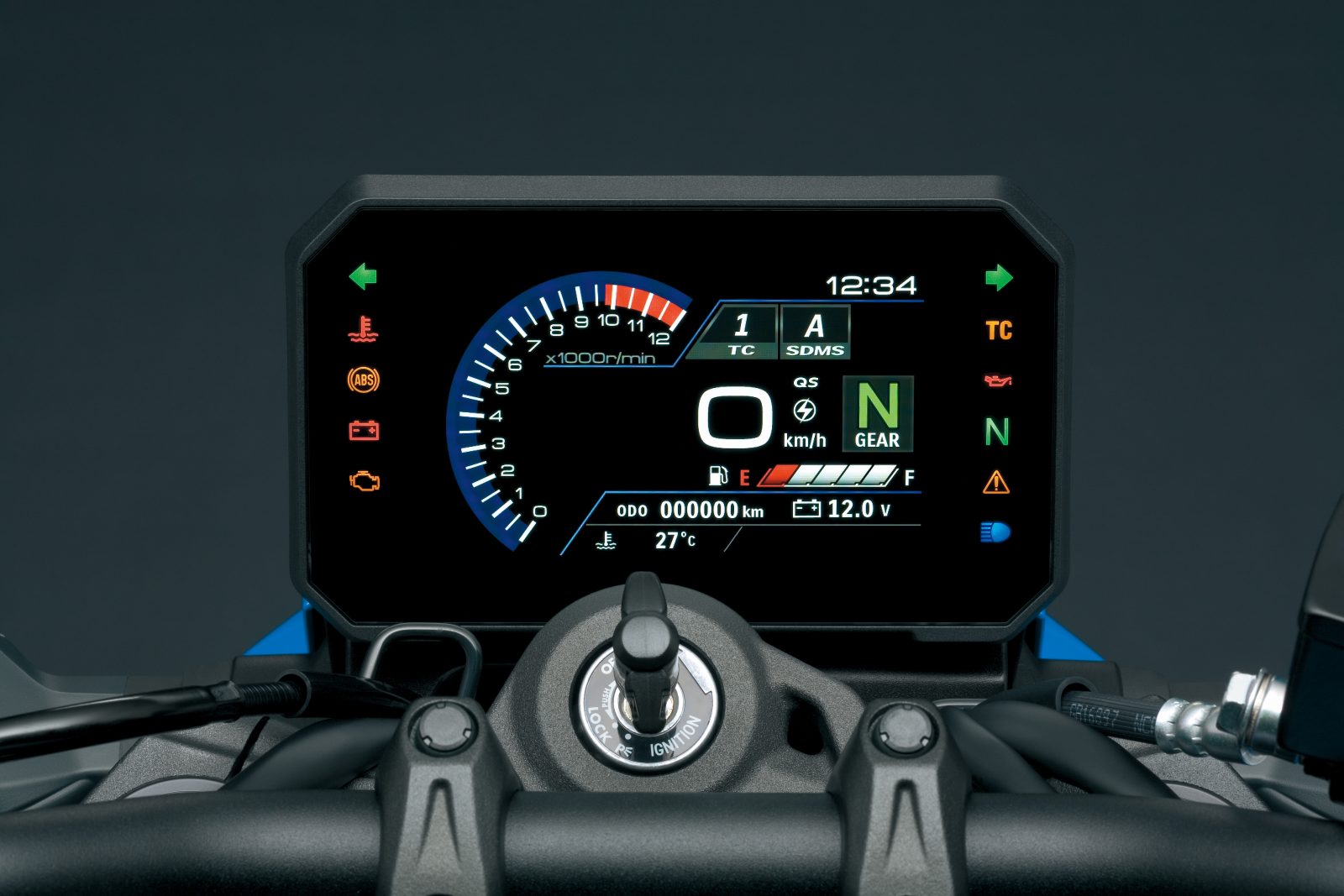
This is an important bike for Suzuki, which desperately wants to claw back lost ground in this competitive market and I managed a full day of solid riding on it.
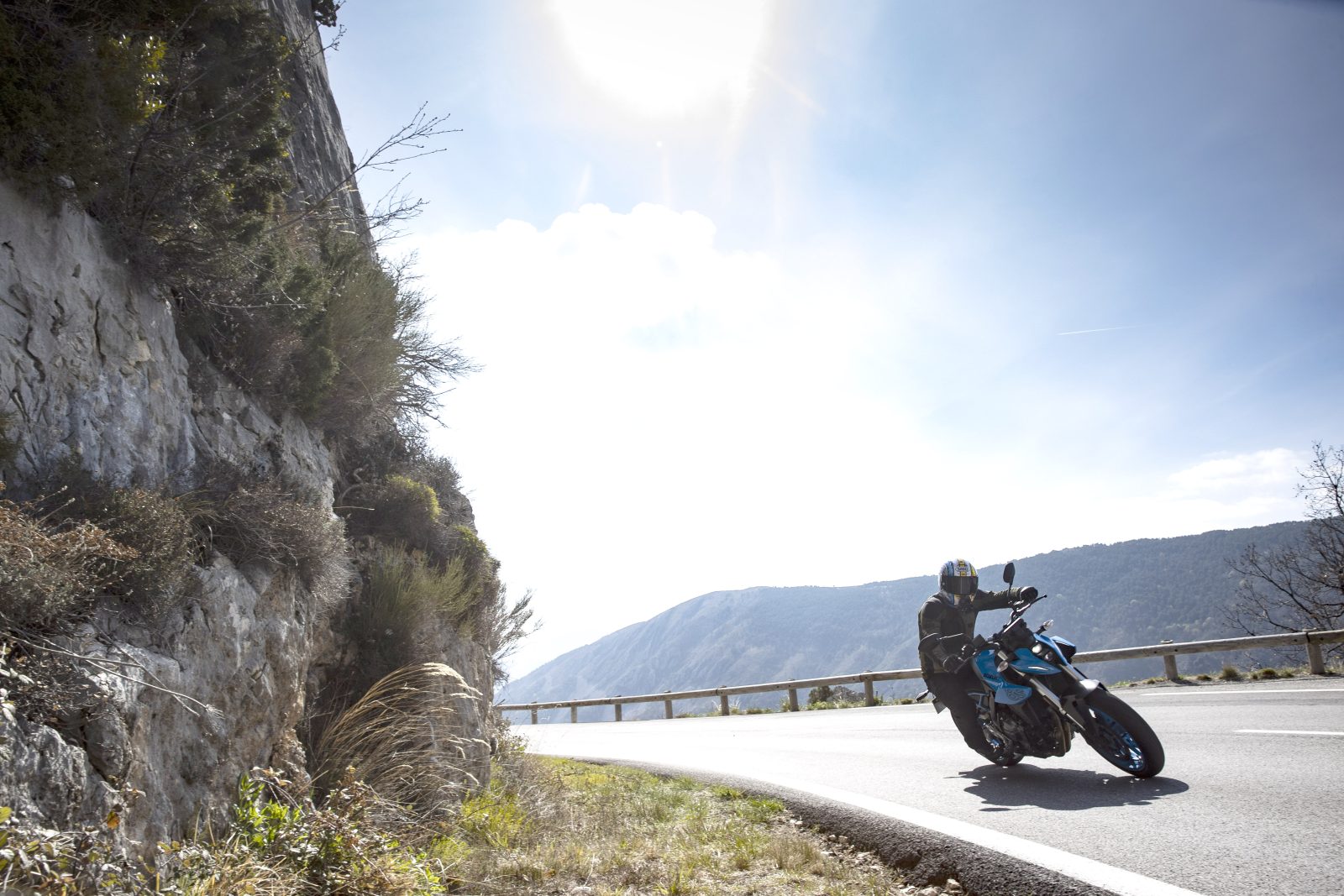
Leaning nonchalantly on its sidestand in the early-morning sunlight, the GSX-8S is a good-looking bike with a modern European flavour. It appears Suzuki has been watching carefully.
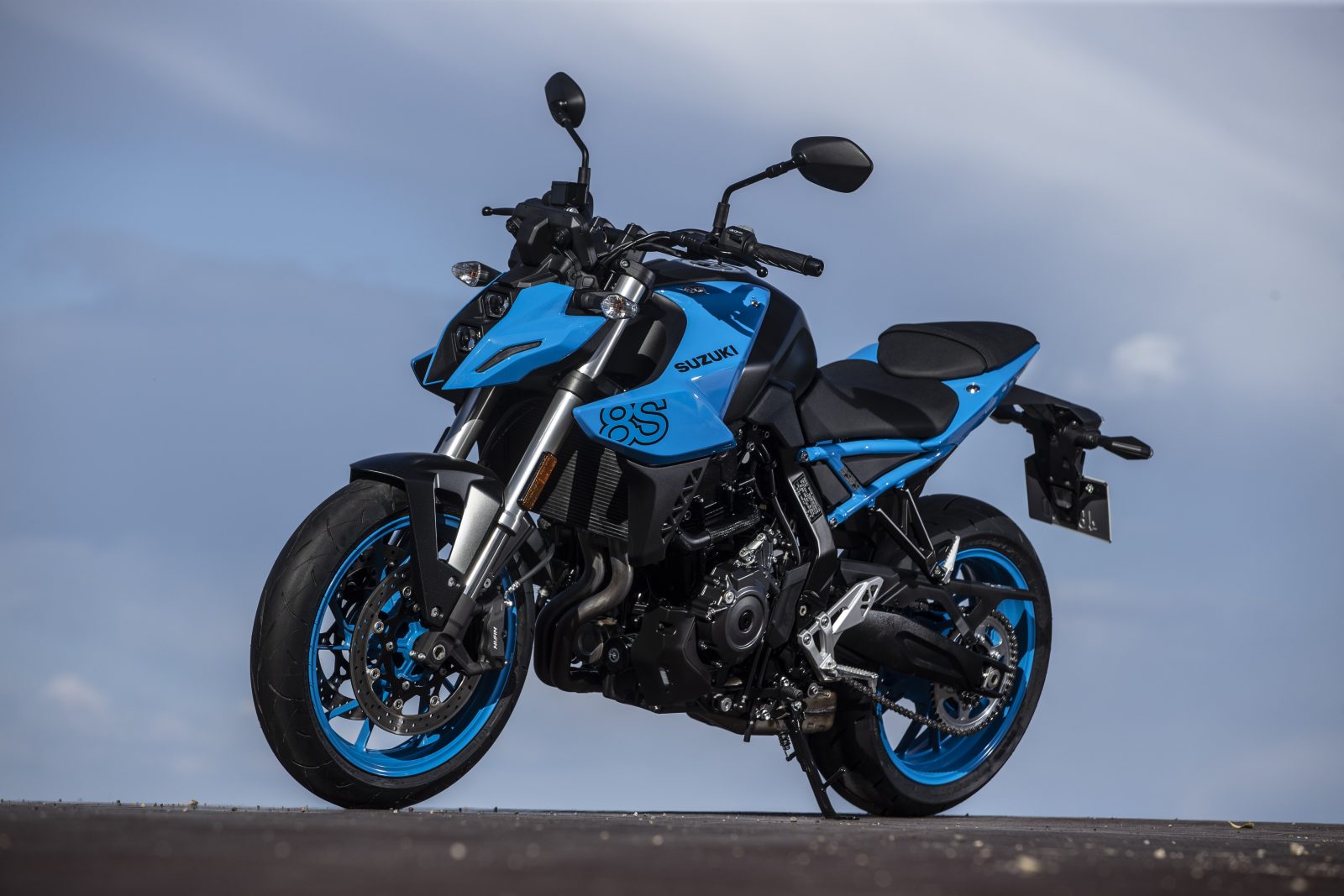
The build quality looks impressive and the paintwork looks like it will last. I particularly like the simplicity of one solid colour and the absence of garish graphics. Yes, the GSX-8S is more expensive than Honda’s new Hornet and it’s going to cost more than the Yamaha MT-07 and Triumph Trident 600, too, but it does exude quality – and that quickshifter does come standard.

The new dash sets the tone nicely. As easy on the eye as it is to navigate, and attractive in a minimalist and unshowy way. There’s a prominent gear position indicator, I don’t have to squint to read information, and I find that I can change the riding mode without even thinking how to do it.

Negotiating my way out of town, my first impressions are positive. In the middle B mode, the fuelling is soft and mellow. At walking speeds, with hardly any throttle, the Suzuki crawls forward effortlessly, feeling impossible to stall (aided by Suzuki’s Low RPM Assist). The transition from 0 to 20 percent throttle is seamlessly smooth; new riders are going to adore this.
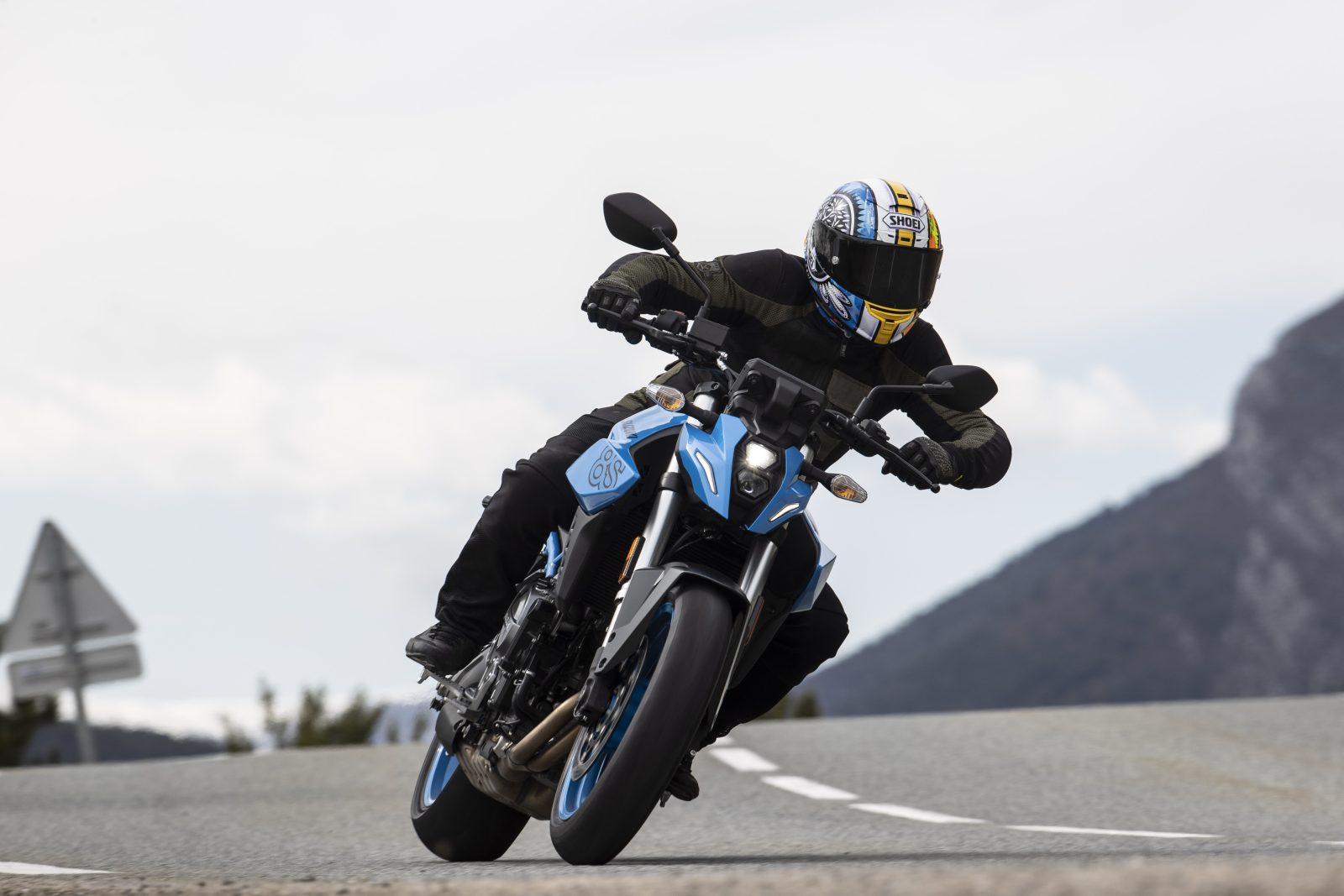
The cable-operated clutch is a little on the heavy side but once underway largely redundant due to the quickshifter. At slower speeds, I still prefer to use the clutch on down changes for a smoother ride – but that’s true of all bikes.
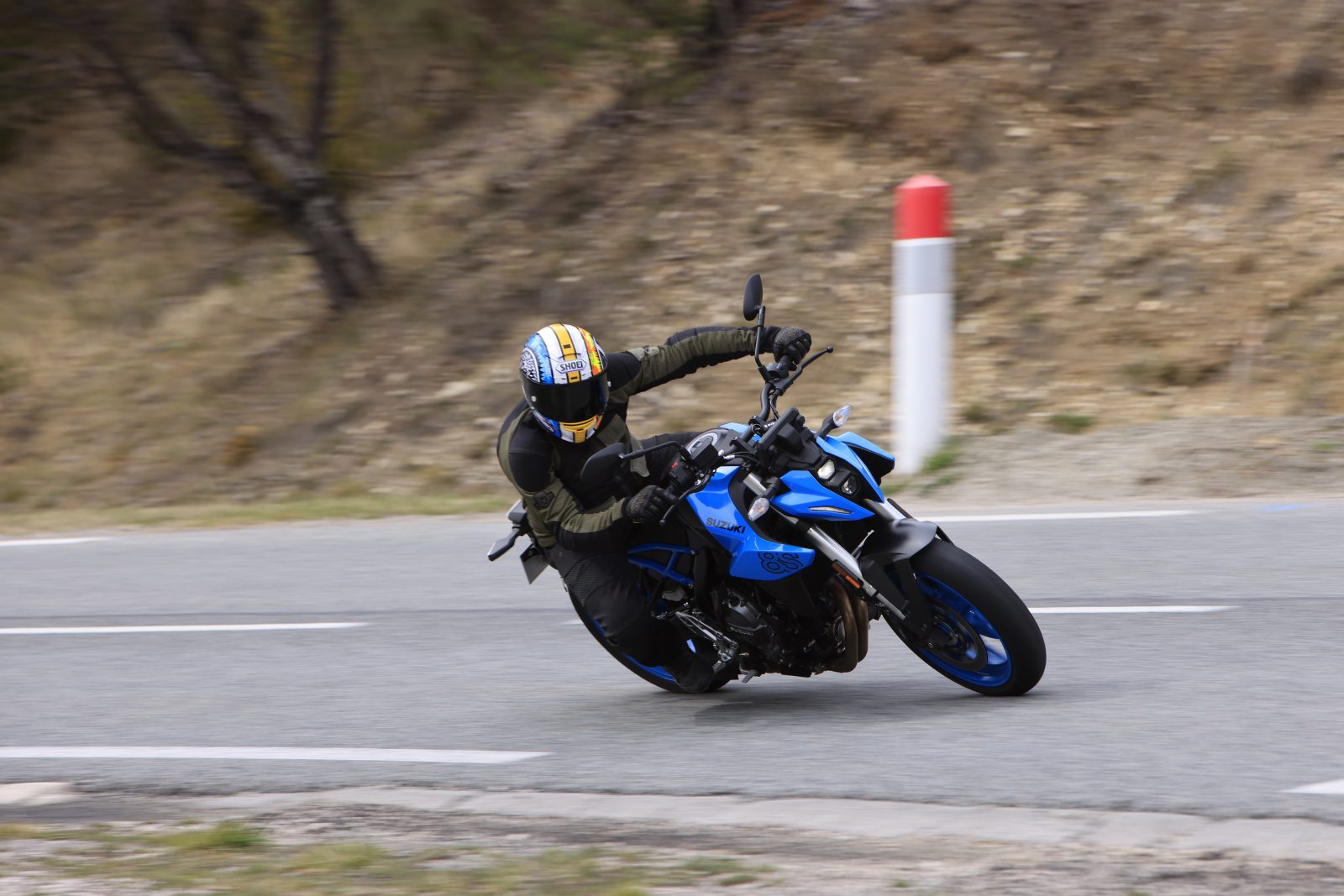
On paper the GSX-8S is heavier than its competition: at 202kg (kerb) it’s 12kg more than the Hornet and nearly 20kg more carriage than Yamaha’s smaller-capacity MT-07. But at slow speeds, where you really notice a bike’s mass, there is a lovely balance and lightness of touch to the 8S. The seat is low at 810mm and, combined with excellent low-speed manners and throttle response, helps make the twin perfectly suited for inexperienced riders. For those with a few more kays under their belt, they will be able to exploit its natural agility and slim profile to carve up their regular commute.

Urban credentials established, I headed into the hills where I was able to work the new 776cc parallel-twin. It may only produce a peak figure of 60-odd kilowatts but its spread of torque is stunning. The GSX-8S, with its tractive 270° crank, drives urgently from low rpm while throttle response is instant. As the revs build into the midrange that drive simply gets stronger and stronger – something I wasn’t fully expecting and which feels a step above the competition. I mean this in a complimentary sense, but the way it punches out of corners makes the twin feel like a vibration-free single. It’s immense fun to short-shift through the middle gears and let the perfectly metered torque shovel the GSX-8S forwards. There’s also a charismatic bark to the short exhaust that makes a ride in the twisties even more rewarding.
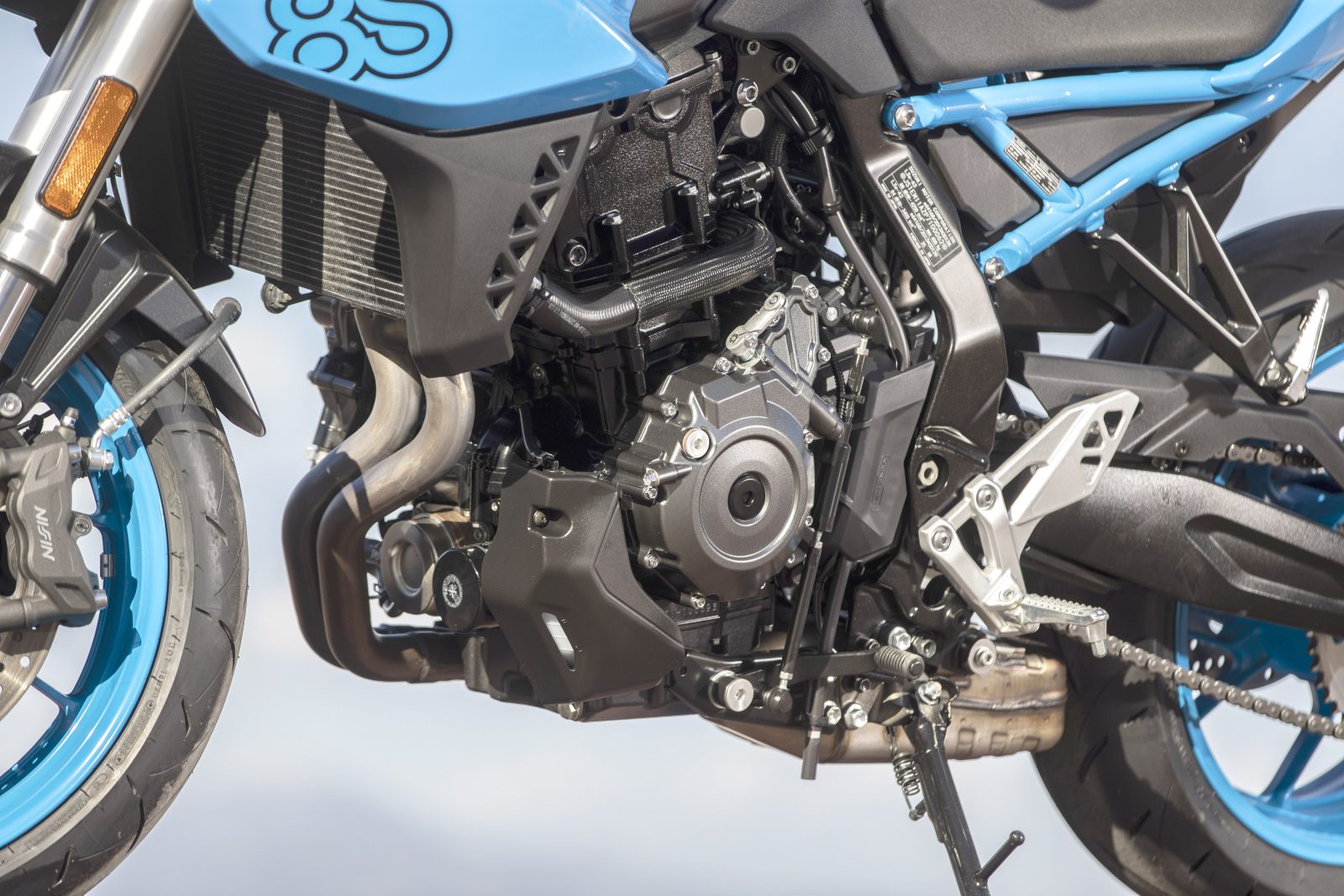
This is an engine created for the real world: happiest driving from 50km/h to 110km/h, precisely where we spend most of our riding time. I tried the sharper A riding mode, but much preferred the softer B, especially as both produce the same power.

In the cool of the morning, I rode with the traction control active (it’s easy to change on the move) and the combination of punchy engine, a brisk riding pace and Dunlop Sportsmax RoadSport 2 tyres that never felt like they were up to temperature in the conditions I was riding in, gave it a decent workout. But even if I never had full confidence in the grip levels of its rubber, the GSX-8S’s handling remained easy and forgiving.

A relatively long wheelbase and a few extra kilos compared to the competition add a welcome sense of stability as speeds climb. The bike is still easy to turn and rolls sweetly into corners. It’s not aggressive or as easy to flick through a set of S-bends as the Yamaha MT-07, but wide ’bar makes the Suzuki feel lighter than it actually is – and it certainly likes to hustle. As the roads opened up the twin ran out of puff as the rpm crept into the upper reaches of its rev range, but with so much punch on tap lower down, you don’t need to chase the revs to have a truly spirited ride.
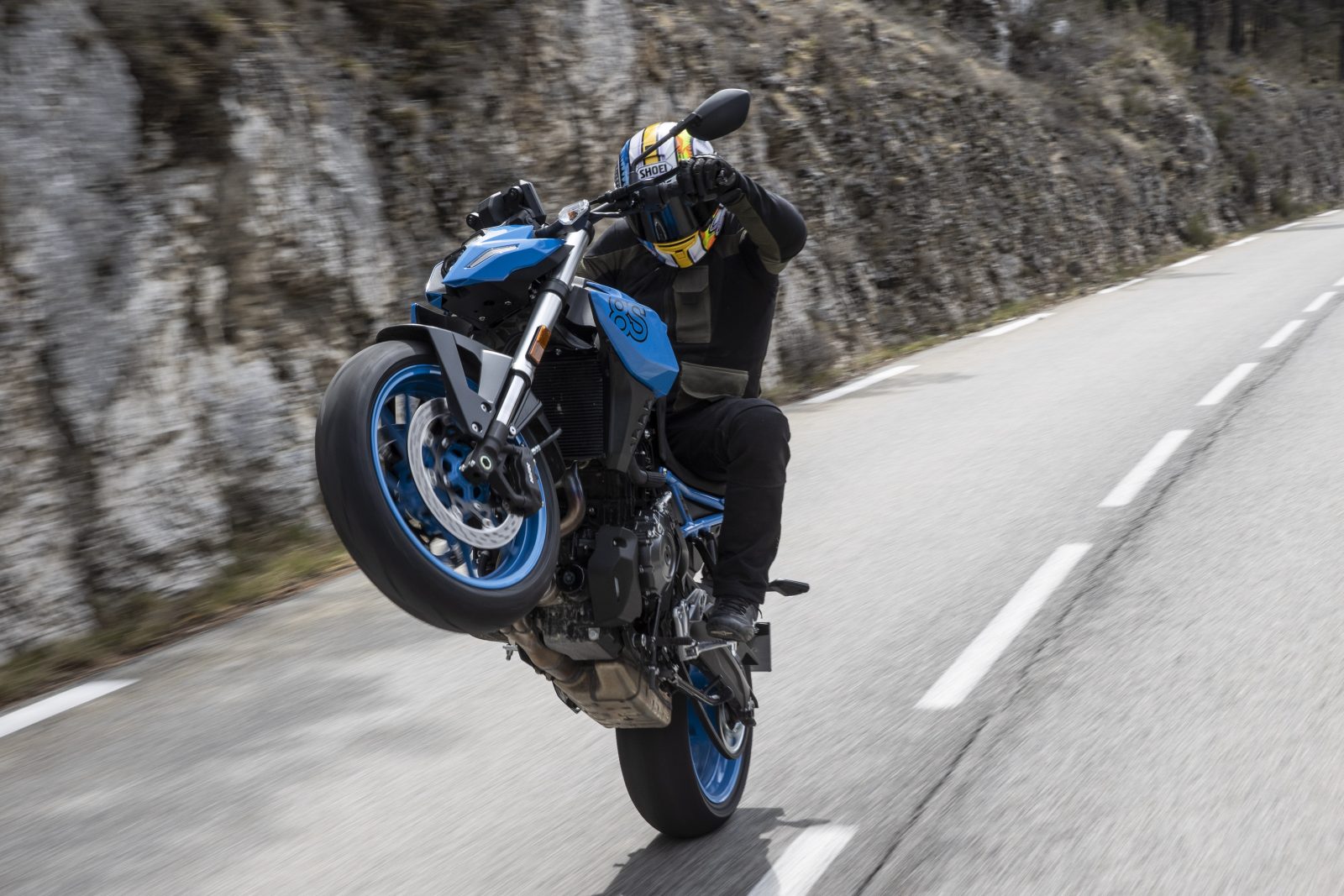
As for the brakes, twin 310mm Nissin discs and calipers up front have to haul up over 200kg of machine plus rider, but they are up for the challenge. In fact, on this type of bike, you don’t need anything more. The rear shock, meanwhile, has spring preload adjustment but there’s no adjusters on the 43mm KYB fork, which is broadly in line with the competition.
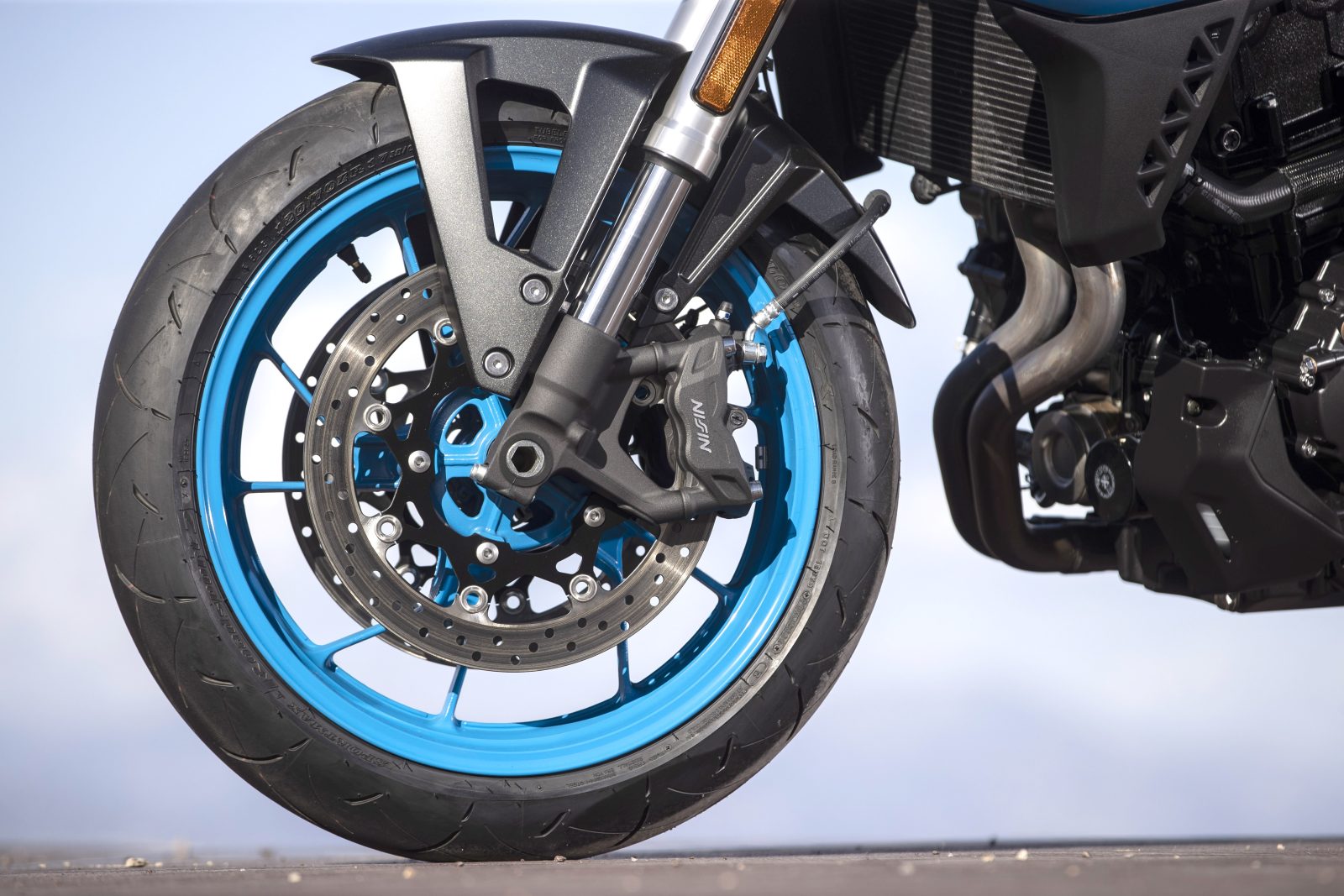
The ride is compliant and forgiving and under everyday riding conditions hard to fault. The rear shock, however, is on the soft side, especially when you ask a little too much or hit a bumpy section at speed. It’s one of the few areas of the GSX-8S that feels low-budget and would benefit from more damping control.
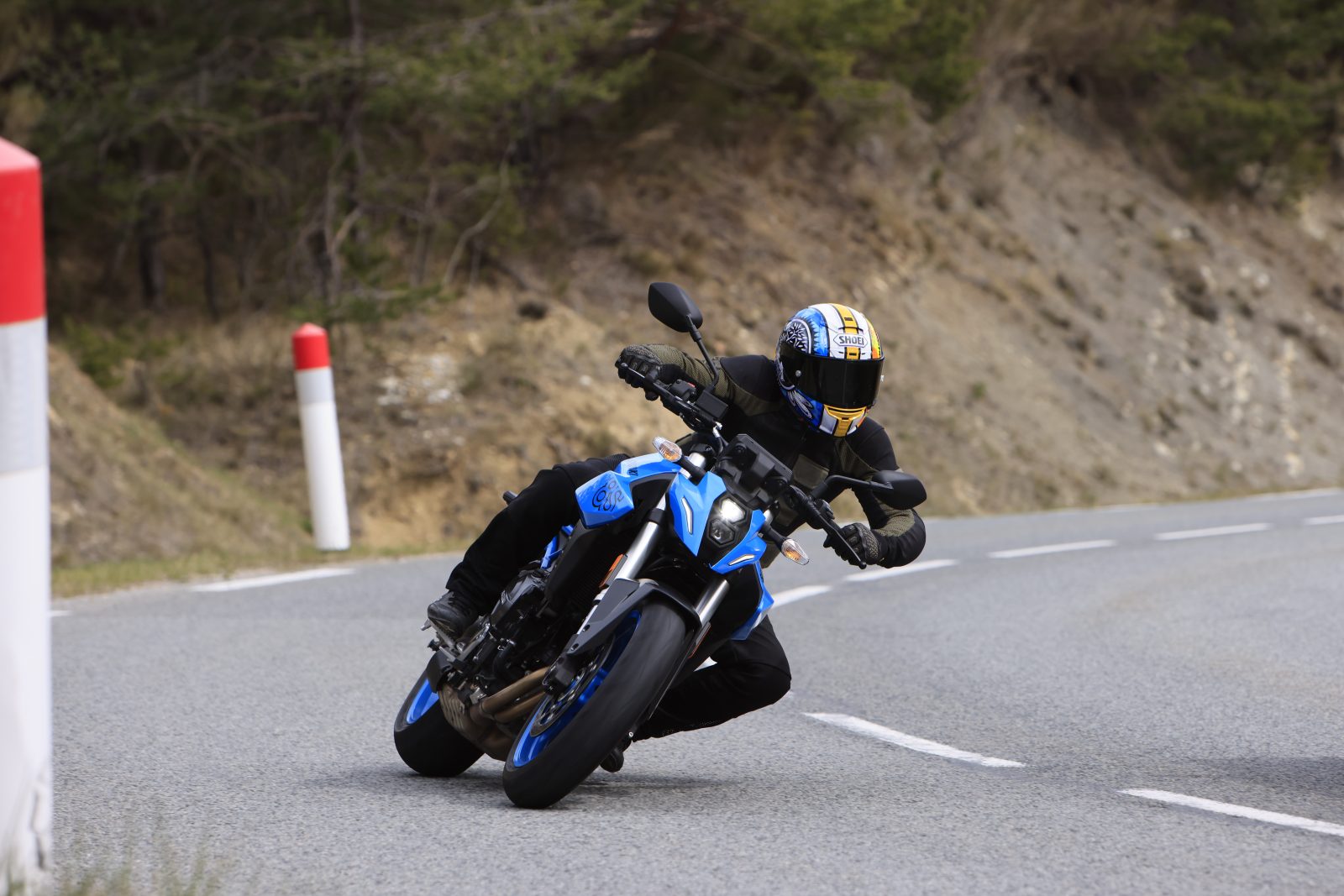
But you have to remember who this bike is aimed at because for just over $14,000 the GSX-8S performs like a quality machine able to fulfil the needs of a wide spectrum of riders, sizes and capabilities. With a quoted 4.2L/100km it should also be inexpensive to run.
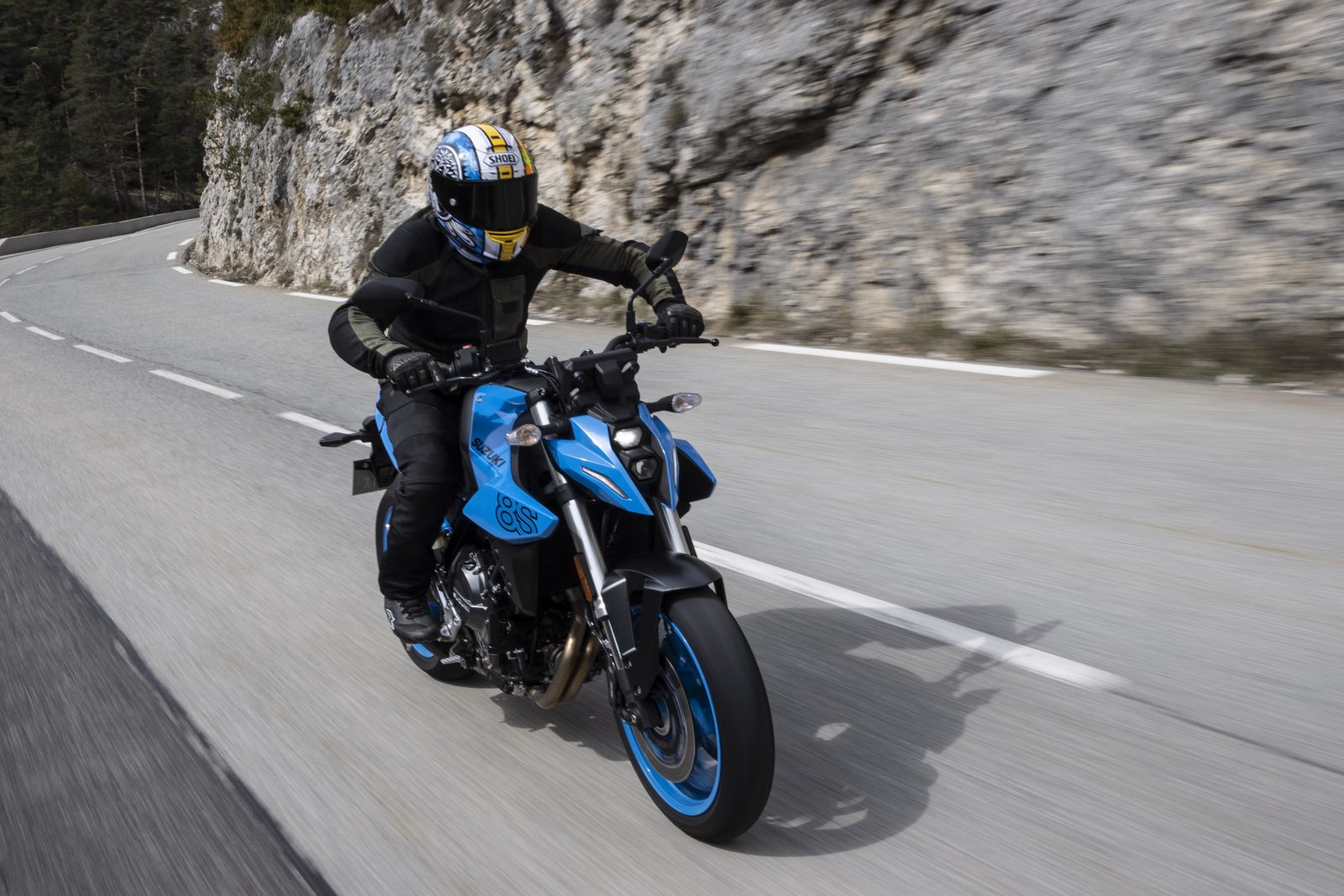
Overall, Suzuki has to be complimented. The all-new engine is a gem with real punch for this class, plus a lovely midrange and perfect fuelling at low speeds. The standard quick-shifter is a nice touch too. Suzuki has also upped the quality all-round in terms of build and finish, and I can’t remember an entry-level Suzuki feeling this good and looking so stylish before. It’s also practical, has a classy and useful dash, excellent switchgear, easy-to-understand electronics and, despite having a relatively low seat, is comfortable and fits all sizes.
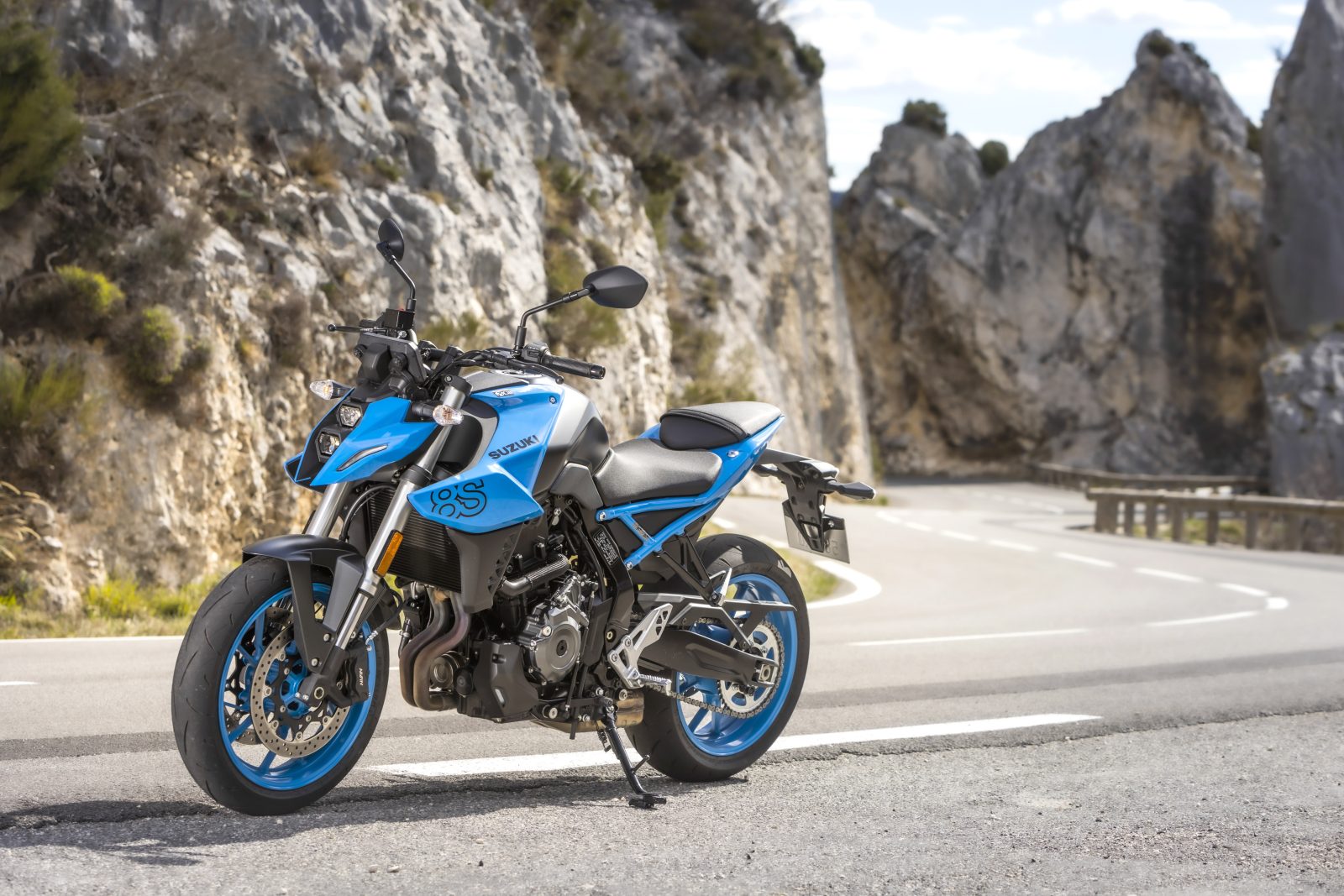
I particularly like the solid and stable feel of the GSX-8S on open roads, as well as its apparent lightness and balance in town, both of which will appeal to inexperienced riders. When you ask more of the suspension and stoppers, it delivers – up to a point. I’d certainly like more feedback from the Dunlop rubber, while sporty owners will benefit from more support and control from the shock.
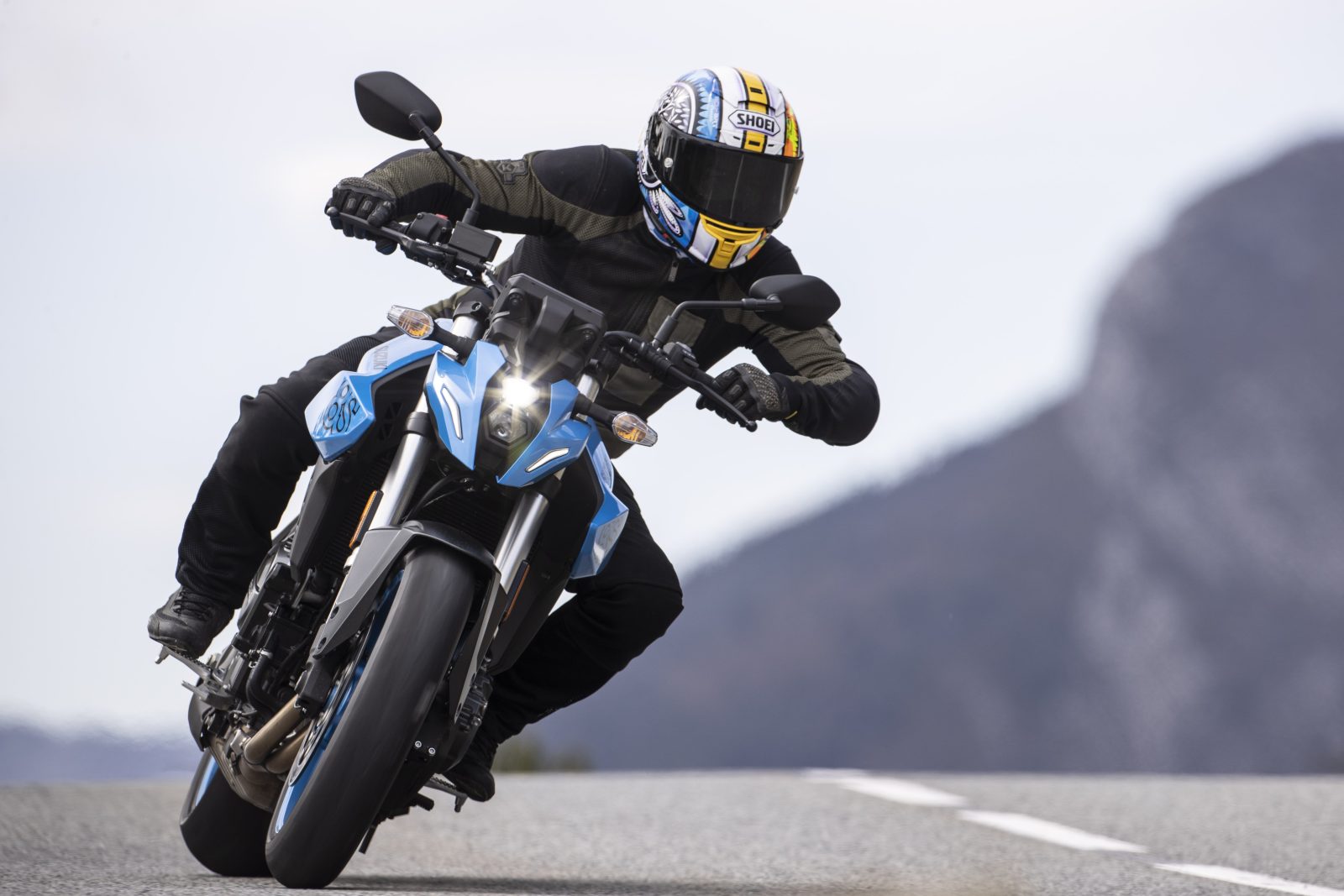
The big test will be when the GSX-8S goes up against some seriously strong competition. How will it fair against the cheaper Honda Hornet? Or the fun-bags MT-07? Or the WP-suspended 790? It’s going to be close but Suzuki is certainly in with a chance of taking the top step with the GSX-8S.
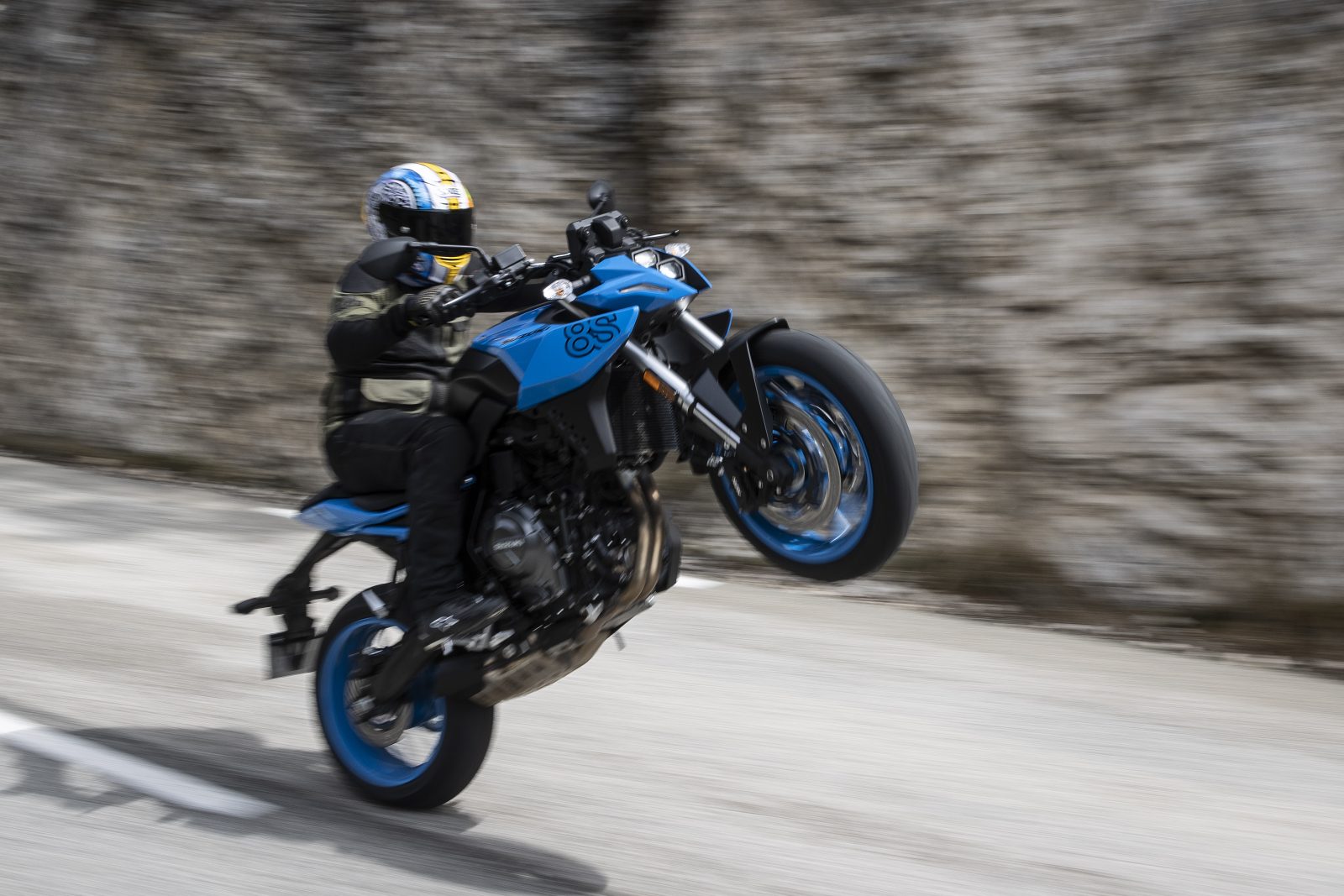
Test Adam Child + Photography Chippy Wood & Jason Critchell

